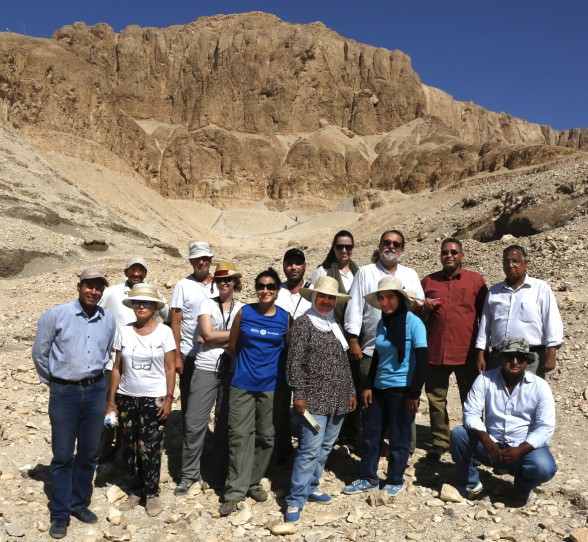A group of archaeologists has discovered a giant face carved into a mountain slope in the Theban necropolis. The face resembles that of the Great Sphinx in Giza and in ancient times looked at the royal necropolis, and during the solstice it “lights up”. Many hidden secrets of the ancient world are preserved in the Theban necropolis. In 1881, archaeologists came across the tomb of TT 320, which contains more than 40 mummies of famous ancient Egyptian pharaohs such as Ramses II, Seti I and Thutmose III. Now archaeologists have made another amazing discovery: all these mummies were guarded by a massive statue carved into the mountain. Although badly damaged, researchers have identified part of the temple, the arch of the eyebrows and even the nasal cavity – all in exact proportions. The discovery was documented by a mission of Spanish archaeologists from the Complutense University of Madrid (UCM) in collaboration with the Center for Ancient Egyptian Documentation of the Egyptian Ministry of Antiquities (CEDAE). Called the Royal Cache Wadi Survey (or C2 Project), the mission found numerous stone inscriptions on the site, mummified animals, offerings, an unexplored tomb and this 20-meter statue, about which it was absolutely unknown. “It appears to depict a face with a wig, probably similar to the face of the goddess Hathor, the daughter of the sun god Ra. And although it is not exactly a sphinx, as it does not have the body of an animal, it could play the same role of guardian as the Sphinx in Giza, “said Egyptologist Jose Ramon Perez-Aquino, professor of ancient history at UCM and co-director of Project C2.
Archaeologists believe that the face carved on the mountain slope was not destroyed by erosion, but was deliberately disfigured, and Coptic excavations suggest that the vandalism took place “very late, almost in the Middle Ages.” In late antiquity (4th, 5th and 6th centuries) the area was heavily Christianized and old temples were converted into monasteries, in which context the carved face may have been perceived as too large and incompatible with the Christian religion, Egyptologists say. Those responsible for the destruction could be Muslims, as the Islamization of the area took place in 637 AD Another interesting detail is that the face of the guardian “lights up” during the solstice, which was a sweat. conducted by archaeologist Perez-Achino on December 21, when the archeological campaign was already over.












